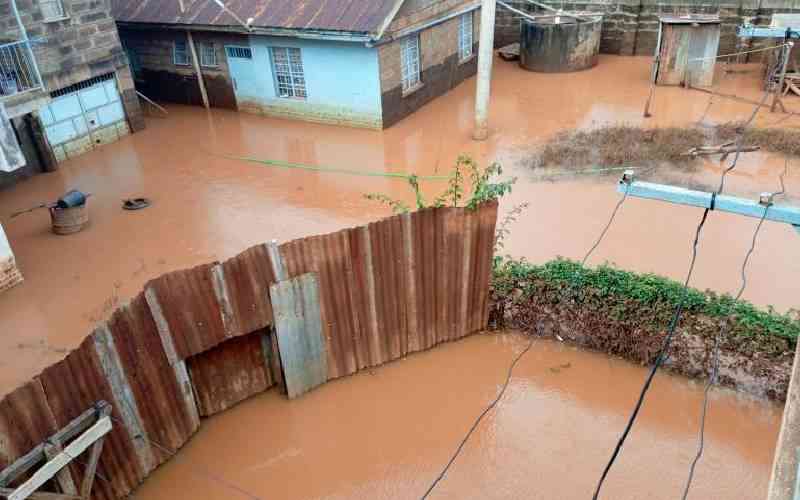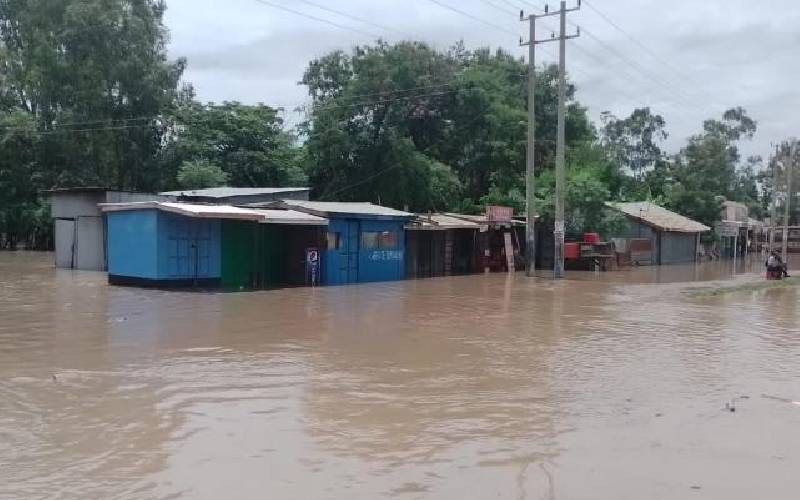Maize Lethal Necrosis, a killer disease famous for wiping entire maize yields and first reported in Kenya in 2011, has been farmers’ and the Government’s biggest headache in the recent past.
In Bomet, where it was first reported, farmers have christened it ‘Koroito’ or plague, even though they can’t explain its origin. When it first struck, it affected over 26,000 hectares, costing the country some Sh2 billion.
The disease continues to ravage some 300,000 metric tonnes of maize yield in Kenya each year, in a country whose per capita consumption of maize stands at 98 kilograms and an approximated 90 per cent of the population rely on the crop directly or indirectly.
On the other hand, the United Nations has classified Kenya among countries that are water-stressed, with the renewable water resources per capita being below 1,000 cubic metres, making the country water-scarce.
The country, according to the body, doesn’t replenish its water resources, with the population consuming 33 billion cubic metres even as renewable water resources stand at 30.7 billion cubic metres, indicating a 2.7 million cubic metres shortfall. Statistics aside, what is the connection between ‘Koroito’ and Kenya’s dismal water levels?
Beyond the expected El Nino rains being the common denominator, it holds the answer to not just the two menaces but to dozens of problems facing a sector that is Kenya’s lifeline.
But positive opportunities abound with the expected El Nino if we look deeper.
Take an example of maize, which is predominantly grown by our farmers and which has currently been the victim of early harvesting as farmers try to salvage what they can ahead of the rains. But the same maize has been the target of the Necrosis disease, with farmers being advised to crop-rotate to tame the spread of the disease.
So now that farms won’t be accommodating maize at least for as long as the rains will be here with us, farmers can take advantage of this to crop-rotate by planting crops that can withstand the heavy torrents.
Fruit trees like mangoes, avocados and passion fruits do well in such rains as well as finger millet. There is no reason to leave farms idle. And as we rush to fill our tanks and all other water storage containers, history will repeat itself months after El Nino is gone, when we retreat to chorusing about failed rains, depressed crop yields, dwindling pastures, food price spikes and episodic hunger. History has taught us that we never learn.
Low-cost water conservation technologies like dams and underground water storage techniques have been the crown jewel of those who have taken advantage of wet seasons to cushion themselves during dry spells. Companies like Elgon Kenya have been proactive in providing modern affordable water technologies especially for the agricultural sector.
Take the example of dam liners that store water for years while preventing seepage, or the transformative Kadogo drip kit that facilitates all-year-round food production that is not reliant on weather after farmers successfully harvest the water.
But even as farmers take advantage of the rains, the Government should create an enabling environment to ensure no crop goes to waste.
Most of the produce that farmers harvest will be stored in substandard conditions that have been hurriedly prepared. This opens new grounds for a potential crisis of gargantuan proportions; the aflatoxins. But to those farmers who are quick to dispose of their maize, exploitative middlemen and traders are ready to ride on the farmers’ desperation by buying produce at throw-away prices.
Institutions like the National Cereals and Produce Board should be replenishing their reserves by buying from farmers.
Stay informed. Subscribe to our newsletter
Our obsession with rain-fed agriculture has been our Achilles heel that has traditionally set in motion a trail of food-related events that affect the food on our tables, our spending power, and the economy at the macro level.
Harvesting water, for example, would mean ten months from now, if rains fail, our farmers can still produce food uninterrupted. It also means livestock farmers can access pasture for their animals, which would shield them from the prohibitive prices of conventional feeds, further boosting household incomes.
 The Standard Group Plc is a
multi-media organization with investments in media platforms spanning newspaper
print operations, television, radio broadcasting, digital and online services. The
Standard Group is recognized as a leading multi-media house in Kenya with a key
influence in matters of national and international interest.
The Standard Group Plc is a
multi-media organization with investments in media platforms spanning newspaper
print operations, television, radio broadcasting, digital and online services. The
Standard Group is recognized as a leading multi-media house in Kenya with a key
influence in matters of national and international interest.
 The Standard Group Plc is a
multi-media organization with investments in media platforms spanning newspaper
print operations, television, radio broadcasting, digital and online services. The
Standard Group is recognized as a leading multi-media house in Kenya with a key
influence in matters of national and international interest.
The Standard Group Plc is a
multi-media organization with investments in media platforms spanning newspaper
print operations, television, radio broadcasting, digital and online services. The
Standard Group is recognized as a leading multi-media house in Kenya with a key
influence in matters of national and international interest.








